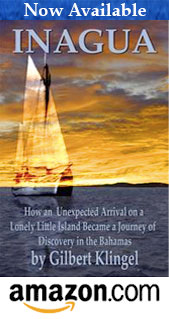As far back as I could remember I had dreamed of owning a sailing ship, a sleek thing of tall masts, of taut gleaming canvas and smooth white hull. It is a dream common to many men. But as the years passed my hope grew in intensity and was fed by an increasing restlessness that is still with me and which I find difficult to explain, even to myself. Some dreams come of themselves, come unexpectedly and pass as quickly. Others and the more enduring ones grow slowly, gaining in stature with the years like children, spreading out, acquiring purpose and going on to realization. It was thus with this dream. From visions of mere adventure these fancies gave way to an object of serious intent. But there was first an interlude that shaped the ends of the dream so that it acquired dignity and became more fitting.
The interlude began in the strange little Republic of Haiti where I was engaged in biological research for the American Museum of Natural History. Prior to this time the pressure of financial and social obligations had forced me, like nearly everyone else, into business; and for a few years I was submerged in a welter of mercantile activity. My lifelong friend, Wally Coleman, with whom I had often discussed the ship of dreams and with whom I had planned long voyages, had drifted into medical work and it seemed that our much planned adventures would never mature. But then an opportunity came for a vacation in Haiti with the privilege of doing for the American Museum some research which had been my hobby for several years.
In Haiti I began to become keenly aware that I was leading a very pleasant life. As an amateur biologist I found ample excuse to indulge my hobby–to seek new places, new species, new habits of those species, and above all to have an opportunity to satisfy an inordinate curiosity about what lay in the next valley, over the curve of the mountain or beyond the turn of the coast. As the time to return home came close I became interested in a research problem that made it desirable to visit a number of the other West Indian Islands, particularly some of the small uninhabited and less frequented ones.
It was the spell of these islands, lying low under the horizon, that drove the dream into reality. Just beyond reach they lay, dozens of them strewn over the blue water from the reaches of the Bahamas to the deserty coasts of Yucatan. On many no student of natural science had stepped, or stepped only casually, lingering for a few hours at the most. It was my desire to remain at each until its faunal peculiarities were digested and understood. At that moment it seemed more important to seek these islands fully equipped to piece together the biological puzzle which interested me more intensely than anything else I could think of. Also, it was a splendid reason to justify the long latent dream…Why not give up business, seek the islands in one’s own ship, in a vessel fitted expressly for the purpose?
Why not? Well, there was the matter of money. That puzzled me considerably. There was the matter of some eighteen hundred miles of open ocean between home and the islands of the Indies. There was the matter of storms and hurricanes, the mysteries of navigation to fathom and, above all, the problem of finding and outfitting a ship for the task.
So fired was I by the idea that I mailed a letter to my old friend Wally Coleman. Would he be willing to consider such a voyage? Impatiently I waited his reply. It came soon after. “You bet,” his letter said. “When do we start?” Hurriedly I wound up my Haitian vacation and returned to the United States.
Back in America the scheme did not seem so easy. Financing the project was the most difficult problem. For weeks and months we scrimped and saved, putting away a few dollars here, a few more there, until we thought we had enough. There were contracts to be made, arrangements with the museum to bring to completion, endless discussion about the scientific problems to be undertaken, how these problems had best be approached and correlated. There were nightly scannings of charts, mappings of itinerary, reminding us of the days long past when we had done the same thing in imagination.
Practical consideration of the problems involved, including those of finance, soon convinced us that ours was to be a small expedition. We could not afford a yacht nor could we pay a crew to man it. The needs of our research program demanded that we should be able to slip into little coves and harbors closed to ships of deep draught. It was essential in order to carry out this program that we utilize the smallest vessel compatible with the task at hand.
Such is the driving power of dreams that in due time we found ourselves with a snug little sailing ship, the backing of a great museum and an appalling sense of what we had started. But it was not as simple as that. A year and a half slipped by before we even found our ship… We scouted all over our home waters, over the Chesapeake Bay. Nothing suited; all that we could find were too old, too narrow, too flimsy, too large or small–everything but what we wanted. Eventually, and unexpectedly, the search came to an end. In a small shipyard at Oxford, Maryland, in process of construction was exactly what we desired.


